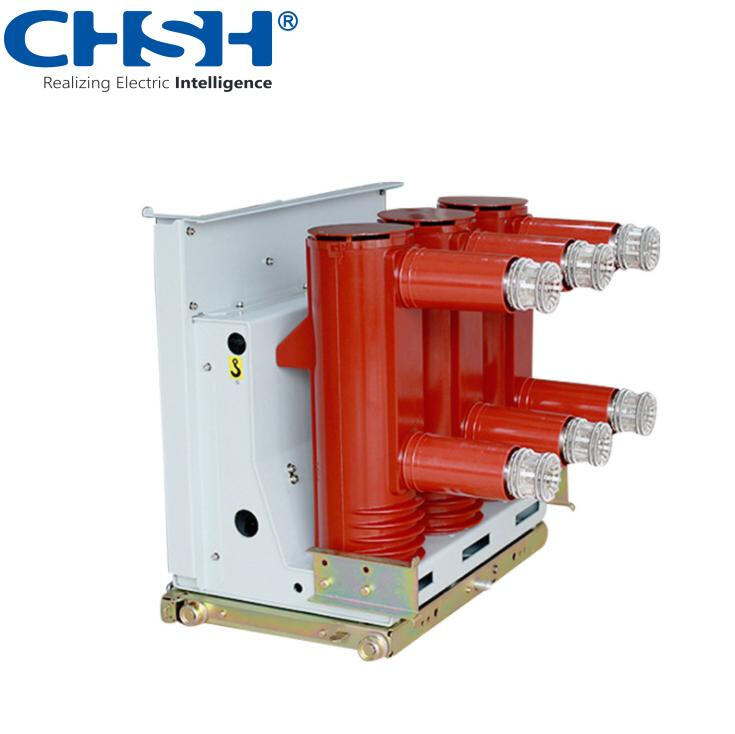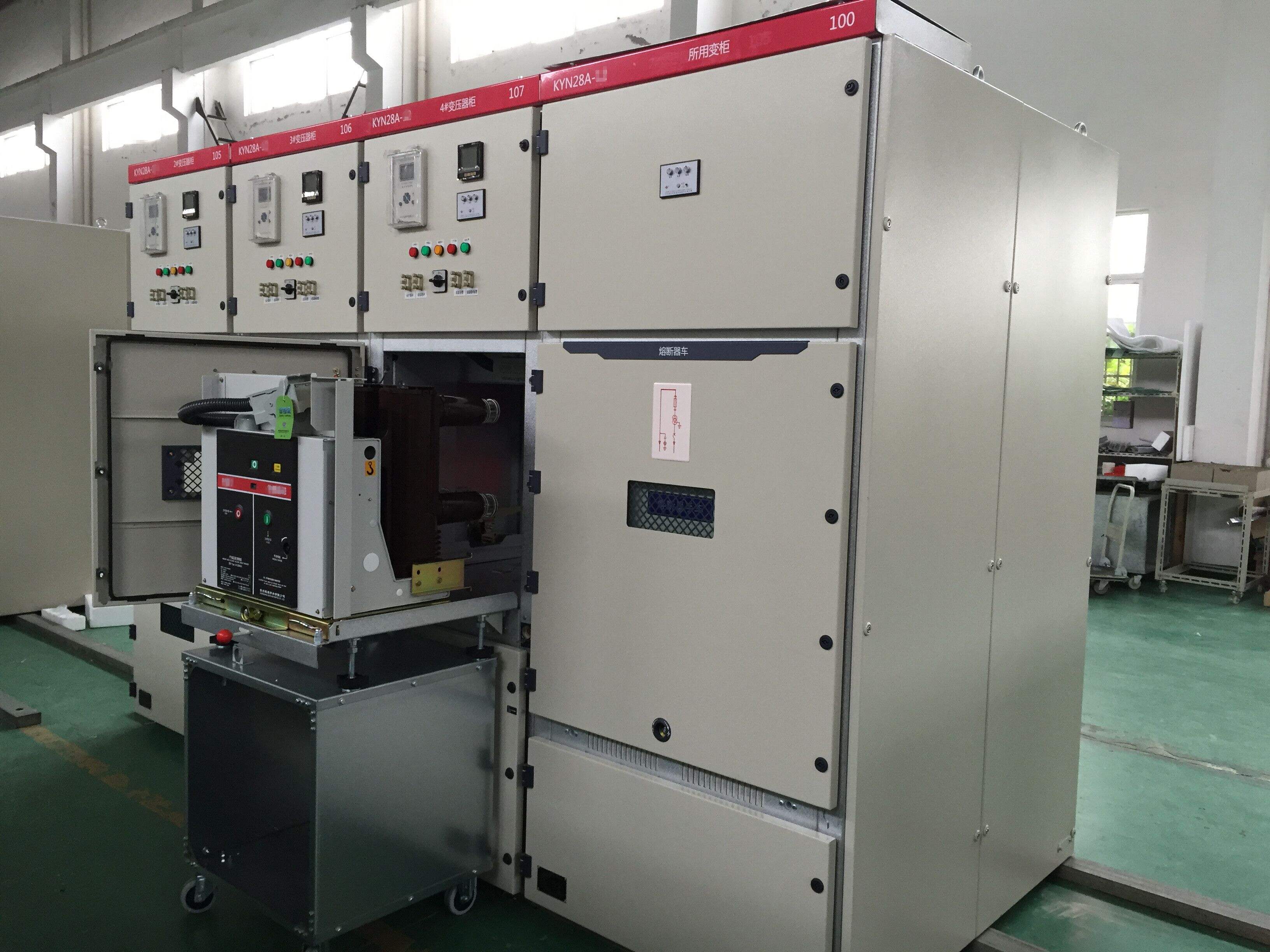Why Vacuum Circuit Breakers Outperform Traditional Models in Safety & Efficiency
Electrical power systems demand high levels of reliability, safety, and operational efficiency. Circuit breakers play a crucial role in these systems by interrupting electrical faults and protecting both equipment and personnel. Over the years, various types of circuit breakers have been developed, including air circuit breakers, oil circuit breakers, and SF₆ circuit breakers. However, in recent decades, Vacuum Circuit Breakers have emerged as a preferred choice in medium-voltage applications due to their superior performance, safety advantages, and environmental benefits.
This article explores why Vacuum Circuit Breakers outperform traditional models, examining their technology, operational benefits, safety features, efficiency advantages, and suitability for modern electrical networks.
Understanding Vacuum Circuit Breakers
A Vacuum Circuit Breaker operates by extinguishing an electrical arc within a sealed vacuum chamber, also known as an interrupter. When the breaker contacts separate during a fault condition, an arc forms between them. The vacuum environment quickly extinguishes the arc because it has no medium to sustain it, unlike air, oil, or SF₆ gas used in other designs.
Key components of a Vacuum Circuit Breaker include:
Interrupter unit (housing the vacuum chamber)
Operating mechanism for opening and closing contacts
Insulation and support structure
Control and monitoring devices
Vacuum Circuit Breakers are widely used in medium-voltage applications, typically ranging from 1 kV to 36 kV, in industries, utilities, and infrastructure projects.
Safety Advantages of Vacuum Circuit Breakers
Arc Quenching Performance
The vacuum interrupter extinguishes arcs almost instantaneously, reducing arc duration to microseconds. This rapid quenching minimizes the risk of damage to equipment and injury to personnel.
No Risk of Fire or Explosion from Oil
Traditional oil circuit breakers use insulating oil, which can ignite under high-temperature arcing. Vacuum Circuit Breakers eliminate this hazard entirely since no oil is involved.
Reduced Arc Flash Energy
By interrupting current more quickly than traditional breakers, Vacuum Circuit Breakers significantly reduce arc flash incident energy, enhancing operator safety.

Sealed, Maintenance-Free Interrupter
The interrupter is sealed for life, preventing exposure to external contaminants and reducing the risk of insulation breakdown that could lead to faults.
Safe for Indoor Installations
With no flammable or toxic gases, Vacuum Circuit Breakers are ideal for enclosed switchgear in industrial plants, commercial buildings, and transport infrastructure.
Efficiency Benefits of Vacuum Circuit Breakers
Low Operating Energy
Vacuum Circuit Breakers require less mechanical energy to open and close contacts compared to traditional models. This results in faster operation and reduced wear on the operating mechanism.
Longer Service Life
The vacuum interrupter can withstand tens of thousands of operations with minimal contact erosion, far outlasting oil and air breakers that suffer more wear.
Minimal Maintenance
Since the interrupter is sealed and does not rely on consumable insulating media, maintenance requirements are drastically reduced. This leads to lower operational costs and less downtime.
Compact Design
Vacuum technology allows for more compact breaker designs, saving valuable space in switchgear rooms, particularly in urban or industrial environments where real estate is costly.
High Electrical Efficiency
The near-instantaneous arc extinction minimizes power losses and thermal stress on equipment, contributing to higher overall system efficiency.
Environmental Superiority
One of the major reasons utilities and industries are shifting to Vacuum Circuit Breakers is their environmental impact — or rather, the lack of it.
No greenhouse gases like SF₆, which has a very high global warming potential.
No oil that can leak or require hazardous disposal.
Fully recyclable materials in many modern designs.
This aligns with global sustainability goals and regulatory trends toward reducing harmful substances in electrical equipment.
Comparing Vacuum Circuit Breakers to Traditional Models
Versus Oil Circuit Breakers
Safety: No flammable oil eliminates fire hazards.
Maintenance: Oil breakers require periodic oil testing and replacement, while vacuum models do not.
Environmental Impact: No risk of oil spills or contamination.
Versus Air Circuit Breakers
Arc Quenching: Vacuum extinguishes arcs faster than air, reducing contact wear and energy loss.
Size: Vacuum models are more compact and lighter.
Lifespan: Fewer moving parts and minimal erosion mean longer life.
Versus SF₆ Circuit Breakers
Environmental: Vacuum breakers have zero greenhouse gas emissions, while SF₆ has one of the highest global warming potentials of any gas.
Maintenance: No need to monitor gas pressure or handle SF₆ gas safely.
Cost Over Time: Lower lifecycle costs due to reduced maintenance and no gas handling infrastructure.
Applications of Vacuum Circuit Breakers
Vacuum Circuit Breakers are now standard in many industries and utility networks:
Industrial Plants: Protecting motors, transformers, and distribution lines.
Utilities: Switching and protection in medium-voltage substations.
Transportation: Rail systems and metro networks requiring reliable, compact switchgear.
Commercial Buildings: High-rise buildings and shopping complexes needing safe, low-maintenance electrical protection.
Renewable Energy Systems: Wind and solar farms, where environmental sustainability is a key consideration.
Advances in Vacuum Circuit Breaker Technology
Recent innovations are making Vacuum Circuit Breakers even more effective:
Magnetic Drive Mechanisms: Replacing traditional spring mechanisms for smoother, faster operation.
Digital Protection Integration: Embedded sensors and communication modules for real-time monitoring.
Hybrid Switchgear: Combining vacuum interrupters with other technologies for improved fault current management.
Arc Fault Detection: Intelligent systems that detect and respond to arc conditions before they escalate.
These advancements position Vacuum Circuit Breakers as a key technology for the future of smart grids and modern electrical systems.
Installation and Operational Considerations
While Vacuum Circuit Breakers offer many benefits, proper installation and operation are essential for optimal performance:
Ensure compatibility with existing switchgear and protection relays.
Provide adequate ventilation for high-current applications.
Follow manufacturer guidelines for insulation clearances and mechanical alignment.
Regularly check control circuits and mechanical linkages, even if the interrupter itself is maintenance-free.
Economic Advantages Over the Lifecycle
Though the initial purchase price of a Vacuum Circuit Breaker can be higher than some traditional models, the total cost of ownership is often lower:
Fewer maintenance interventions reduce labor and downtime costs.
Long operational life reduces replacement frequency.
No consumables like oil or gas eliminate recurring material expenses.
For utilities and industrial operators, these savings add up significantly over decades of service.
The Role of Vacuum Circuit Breakers in Grid Modernization
As electrical grids evolve toward smarter, more resilient networks, Vacuum Circuit Breakers are well-suited to play a central role:
Their compact size and modular design make them ideal for retrofitting older switchgear rooms.
Their environmental safety aligns with regulations for green energy infrastructure.
Their fast operation and high reliability improve system stability during fault events.
These features make them not just a replacement for older breakers, but a forward-looking solution for modern electrical distribution.
Conclusion
Vacuum Circuit Breakers outperform traditional models in almost every critical metric: safety, efficiency, environmental sustainability, maintenance requirements, and long-term cost-effectiveness. By eliminating flammable oils and greenhouse gases, offering rapid arc extinction, and providing long operational life with minimal maintenance, they are an ideal choice for today’s medium-voltage applications.
In industries, utilities, and infrastructure projects that demand safe, reliable, and sustainable electrical protection, Vacuum Circuit Breakers are increasingly becoming the default choice. As technology continues to evolve, their capabilities will only expand, ensuring that they remain at the forefront of modern power system protection for years to come.
FAQ
What voltage range do Vacuum Circuit Breakers typically handle?
They are most commonly used in medium-voltage applications from 1 kV to 36 kV.
How long do Vacuum Circuit Breakers last?
With proper installation, they can operate for decades, often exceeding 30,000 to 50,000 operations without major maintenance.
Do Vacuum Circuit Breakers require special handling?
They require standard electrical safety practices, but no special handling for insulating media since the vacuum is sealed for life.
Can they replace SF₆ breakers directly?
Yes, in many cases they can, though retrofitting may require mechanical and electrical compatibility checks.
Are Vacuum Circuit Breakers suitable for outdoor use?
Yes, when housed in weatherproof enclosures or outdoor-rated switchgear, they perform reliably in various environmental conditions.
Table of Contents
- Why Vacuum Circuit Breakers Outperform Traditional Models in Safety & Efficiency
- Understanding Vacuum Circuit Breakers
- Safety Advantages of Vacuum Circuit Breakers
- Efficiency Benefits of Vacuum Circuit Breakers
- Environmental Superiority
- Comparing Vacuum Circuit Breakers to Traditional Models
- Applications of Vacuum Circuit Breakers
- Advances in Vacuum Circuit Breaker Technology
- Installation and Operational Considerations
- Economic Advantages Over the Lifecycle
- The Role of Vacuum Circuit Breakers in Grid Modernization
- Conclusion
- FAQ

